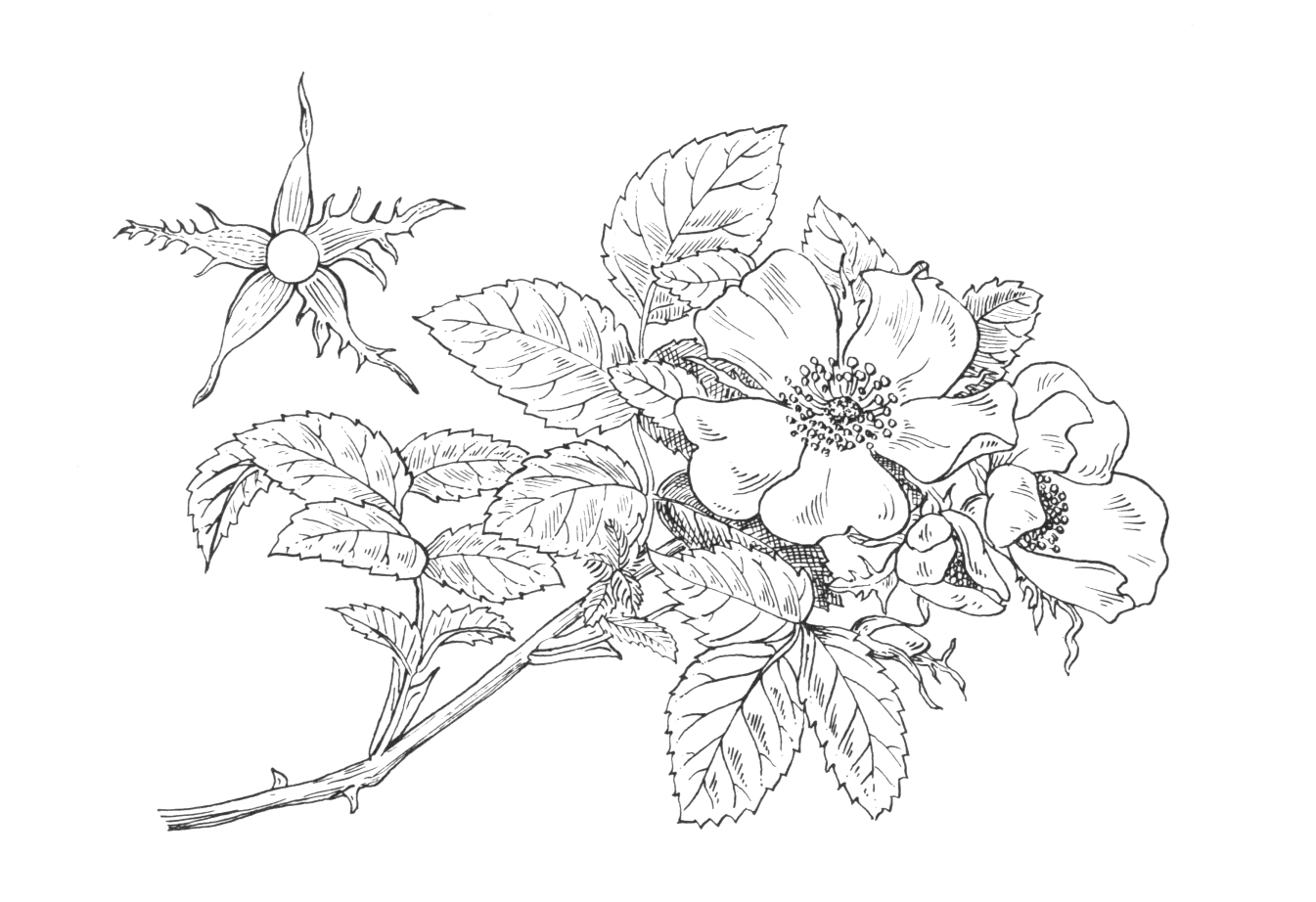Rosa canina
Credits
Article from Bean's Trees and Shrubs Hardy in the British Isles
Recommended citation
'Rosa canina' from the website Trees and Shrubs Online (treesandshrubsonline.
Genus
Common Names
- Common Brier
- Dog Rose
Infraspecifics
Other taxa in genus
- Rosa acicularis
- Rosa × alba
- Rosa albertii
- Rosa anemoniflora
- Rosa arkansana
- Rosa arvensis
- Rosa banksiae
- Rosa beggeriana
- Rosa biebersteinii
- Rosa blanda
- Rosa bracteata
- Rosa brunonii
- Rosa californica
- Rosa carolina
- Rosa centifolia
- Rosa cerasocarpa
- Rosa chinensis
- Rosa corymbulosa
- Rosa damascena
- Rosa davidii
- Rosa 'Dupontii'
- Rosa ecae
- Rosa eglanteria
- Rosa elegantula
- Rosa elymaitica
- Rosa fedtschenkoana
- Rosa filipes
- Rosa foetida
- Rosa foliolosa
- Rosa × fortuniana
- Rosa × francofurtana
- Rosa gallica
- Rosa gigantea
- Rosa glauca
- Rosa glutinosa
- Rosa gymnocarpa
- Rosa × harisonii
- Rosa helenae
- Rosa hemisphaerica
- Rosa × hibernica
- Rosa hugonis
- Rosa × involuta
- Rosa jundzillii
- Rosa laevigata
- Rosa longicuspis
- Rosa 'Macrantha'
- Rosa macrophylla
- Rosa majalis
- Rosa maximowicziana
- Rosa moyesii
- Rosa mulliganii
- Rosa multibracteata
- Rosa multiflora
- Rosa nitida
- Rosa nutkana
- Rosa palustris
- Rosa pendulina
- Rosa persica
- Rosa pimpinellifolia
- Rosa pisocarpa
- Rosa × polliniana
- Rosa prattii
- Rosa pulverulenta
- Rosa × reclinata
- Rosa × reversa
- Rosa × richardii
- Rosa roxburghii
- Rosa rubiginosa
- Rosa rubus
- Rosa rugosa
- Rosa sempervirens
- Rosa sericea
- Rosa setigera
- Rosa setipoda
- Rosa sicula
- Rosa soulieana
- Rosa stellata
- Rosa tomentosa
- Rosa villosa
- Rosa virginiana
- Rosa 'Watsoniana'
- Rosa webbiana
- Rosa wichuraiana
- Rosa willmottiae
- Rosa xanthina
A strong-growing shrub up to 12 ft high (sometimes much taller on the continent); stems armed with scattered prickles which are uniform, hooked, with no mixture of smaller, bristle-like ones. Leaflets usually five or seven, elliptic to broadly so or ovate, mostly 1 to 11⁄2 in. long, acute or acuminate, glabrous or almost so on both sides, sometimes glandular on the veins beneath, marginal teeth usually simple and eglandular, more rarely compound and glandular. Upper stipules broad. Flowers sweetly scented, 11⁄2 to 2 in. wide, white or pinkish, in clusters or solitary, opening around midsummer; pedicels glabrous, to about 1 in. long, they and the receptacle usually smooth, more rarely with some glandular bristles. Outermost sepals (which overlap their neighbours on both sides) pinnately lobed on both margins, the next similarly lobed on one side only (the overlapping side); the inner two, which are overlapped on both sides, have entire margins. Disk of receptacle broad. Styles glabrous or downy, not or slightly exserted from the very narrow aperture; stigmatic head usually conical, not concealing the entire surface of the disk. Fruits egg-shaped or roundish, bright red, with the sepals fallen away or remaining until the fruit changes colour.
The dog rose in one or other of its forms is spread over most of the cooler parts of Europe and S.W. Asia. It is naturalised in some parts of N. America. In the British Isles it is one of the commonest and most beautiful of wild shrubs, giving to the English country lanes one of their sweetest and most characteristic charms. For this reason the dog rose is out of place in the trim garden where so many other roses with a richer beauty compete for room. Yet in one sense the dog rose is the commonest of species in gardens, for in one form or another it provides the Canina stock on which most garden roses are budded.
The curiously diverse form of the sepals of R. canina (and of other members of the section to which it belongs) furnishes the answer to the Latin riddle,which has been translated thus:
Five brothers in one house are we,
All in one little family,
Two have beards and two have none,
And only half a beard has one.
Footnotes
There are two versions of this riddle. What must be the older of the two is in Latin doggerel. In the second and more elegant version the half-bearded sepal asks the riddle:
Quinque sumus fratres unus barbatus et alter
Imberbesque duo, sum semiberbis ego.
R afzeliana Fr.
Synonyms
R. glauca Vill. ex Loisel., not Pourr.
R. vosagiaca Desportes
R. dumalis sens . Boulenger, ? not Borkh
R coriifolia Fr. (1814)
Synonyms
R. caesia Sm. (1812)
R. canina var. coriifolia Bak.
R. dumalis var. coriifolia (Fr.) Boulenger
R. glauca var. coriifolia (Fr.) Crép
R corymbifera Borkh.
Synonyms
R. dumetorum Thuill.
R. canina var. dumetorum (Thuill.) Bak.
R. canina var. corymbifera (Borkh.) Rouy
R obtusifolia Desv.
Synonyms
R. tomentella Leman
R stylosa Desv.
Synonyms
R. systyla Bastard


